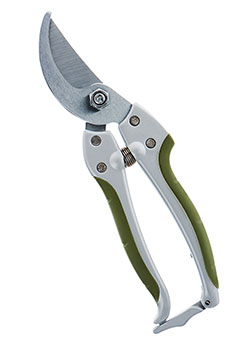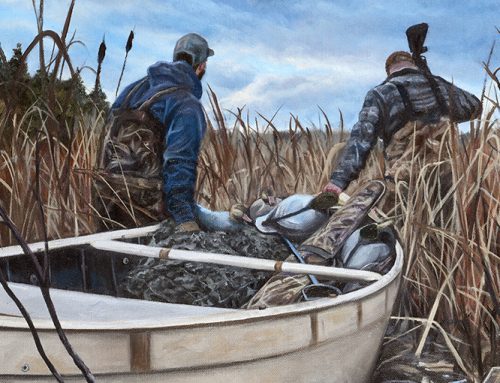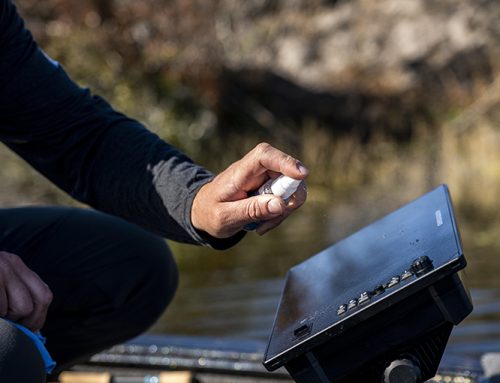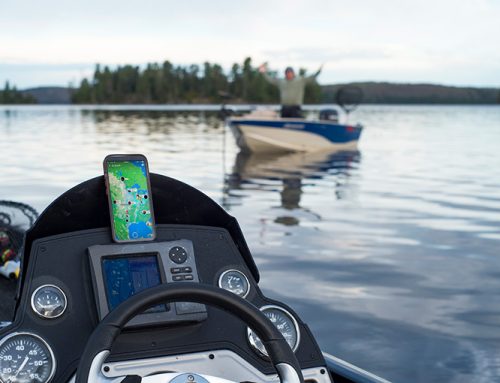 If you are a hunter, you have a pack full of gear. This is nearly a guarantee. If you don’t, you definitely have a partner who does.
If you are a hunter, you have a pack full of gear. This is nearly a guarantee. If you don’t, you definitely have a partner who does.
There are just too many things a hunter needs to carry in the bush. On any given day, you will be scouting, cutting trail, tracking game, or cleaning a downed animal. The tools that make these pursuits easier can normally be held in a medium-sized pack.
Everybody has a few tools they use all the time and it varies from person to person. However, for the sake of discussion, here are the six most useful things I have in my hunt pack.
Shooting stick
The shooting stick is a criminally underused hunting tool. And I have to admit right now I came late to the party.

For most of my hunting career, I never wanted to carry one, and only started using them seriously over the past few years due to my increased use of ground blinds.
A shooting stick can radically change the number of clean, one-shot kills a hunter makes in nearly every hunting situation. It steadies the gun and takes the pressure off the arms and body to hold still.
When I think back over the missed or badly executed shots I’ve made during 35 years of hunting, nearly all of them would have turned out differently if I had used a shooting stick.
There are a lot of different models to choose from and some are relatively cheap. Affordable is good, but I’d recommend the cheaper ones only for use in ground blinds, enclosed tree stands and other set ups that don’t require a lot of banging around in the bush.
If you’re a still-hunter, or like to track game, buy a tougher, more expensive stick that adjusts easily on the fly and is made of strong, composite materials that will take abuse.
They’re more money but worth the investment. A shooting stick will definitely improve any big-game hunter’s success.
Pocket knife
A pocket knife is a blade that can fold up and fit into your pocket. Many outdoors people have these with them all the time, many don’t. Yet there are few things as useful as a pocket knife when you are hunting.

Needless to say, you can use a small knife to gut an animal, but generally a hunter has a larger, stiffer blade for that job in a sheath.
The pocket knife is used for everything else, from notching tags to cutting rope. Small knives are also handy for opening packages of trail mix, cutting pepperettes, and any number of other food related tasks.
Snippers
Garden snippers are not one of those tools most of us think of when hunting is discussed, but they really are useful.

Although not as multi-purpose as some of the other things mentioned, the one job they do is extremely useful. If you’ve ever wanted to sit under a beautiful big oak on a turkey hunt but had a hawthorne bush in the vicinity of your backside, the garden snippers are for you.
They make quick and relatively silent work of most brush and sticks that can be annoying. Anything with thistles or other pokey objects can be quickly and painlessly removed with snips.
They also fit well into a pack and are easy to use while wearing hunting gloves.
Camo duct tape
Another indispensable tool, camo duct tape takes the whole Red Green ‘it fixes anything’ theory to a whole new level. It really does fix everything.

I’m pretty sure that every one of my half dozen tree stands has camo duct tape on some part of it. Sometimes I use it to mask a metallic shine, other times to keep metal parts from clanging together.
I’ve used it to repair a ground blind torn open by bears, and to fix a hole in camo rubber hunting boots. You can even camo up your shotgun barrel for turkey hunting.
Flagging tape
A roll of flagging tape is a must-have in any hunter’s pack. Realistically, there should be a roll in your pack, in your jacket pocket, on your gun case, and in your pants.
A few rolls in the truck and one in the ATV is also a good plan. Why? Because flagging tape can make a number of very important elements of hunting that much better.
My number one use for flagging tape is tracking a blood trail. By leaving a piece of tape at every important area of sign, you can often find the animal more quickly by seeing a line of movement develop.
If it’s raining, flagging tape will show you where the sign was even after the blood has been washed away. The coloured tape is also useful for marking trails into and out of blinds and tree stands.
If you are still-hunting, flagging tape wrapped on a tree branch every 25 yards or so will help you find your way back out if starts to get dark on you.
Folding saw
The tool I use the most on a day-to-day basis when hunting is a small collapsible brush saw.

The one I’ve had for about 18 years is called a Sierra Saw, and is made by Coghlan’s. This inexpensive tool has a plastic faux wood body with a metal blade sporting super sharp teeth. The saw folds and can be stored easily in a packsack or rucksack.
It’s great for cutting out trail and for clearing large limbs for shooting lanes. It’s also useful for field dressing as it cuts through small bones and cartilage with precision.
The folding saw is one of those tools that keeps revealing new uses, usually due to sheer necessity. For some reason, no matter how hard I use it, the teeth of this saw never seem to get dull.
A couple years back, I bought an extra Sierra Saw just to make sure I always had one if I lost my old faithful in the bush. So far so good. It’s truly an indispensable tool for hunting.
Those are my six favourite hunting tools in the bush. What are yours?
This article originally appeared in the Ontario OUT of DOORS 2014-15 Hunting Annual. To see more stories like this, subscribe to OOD today.






Leave A Comment